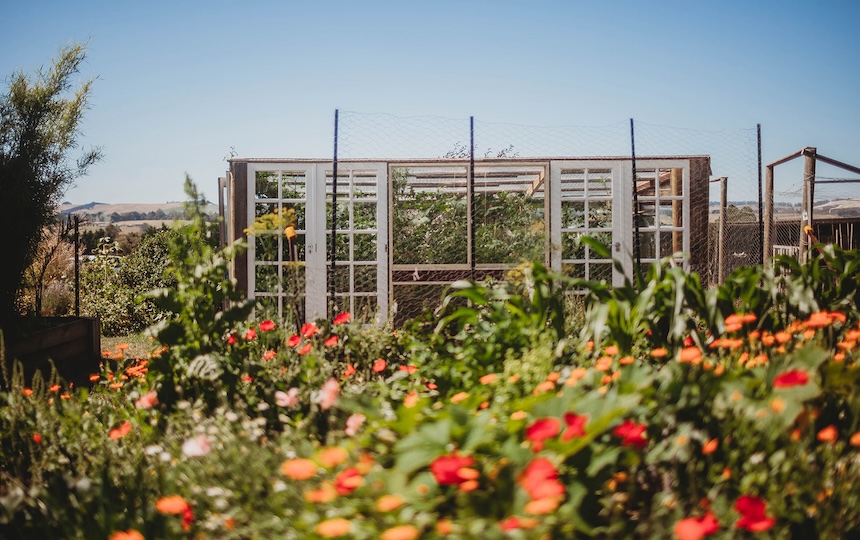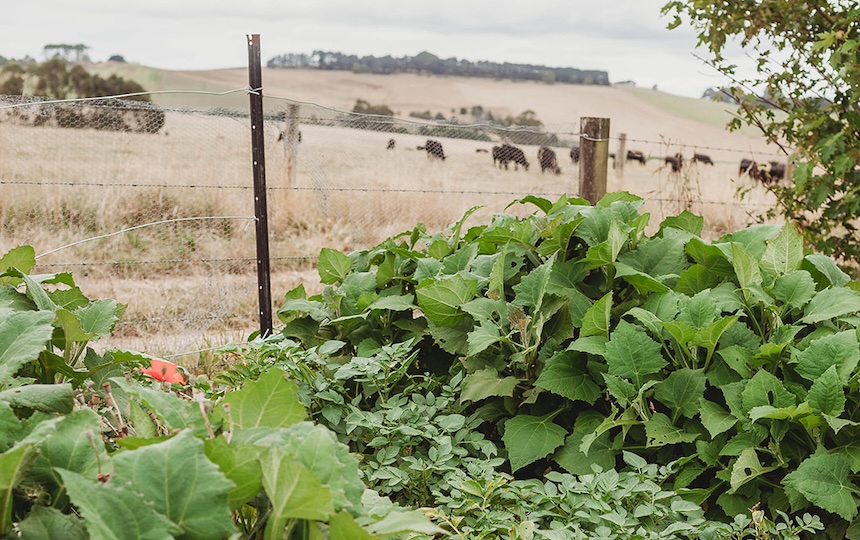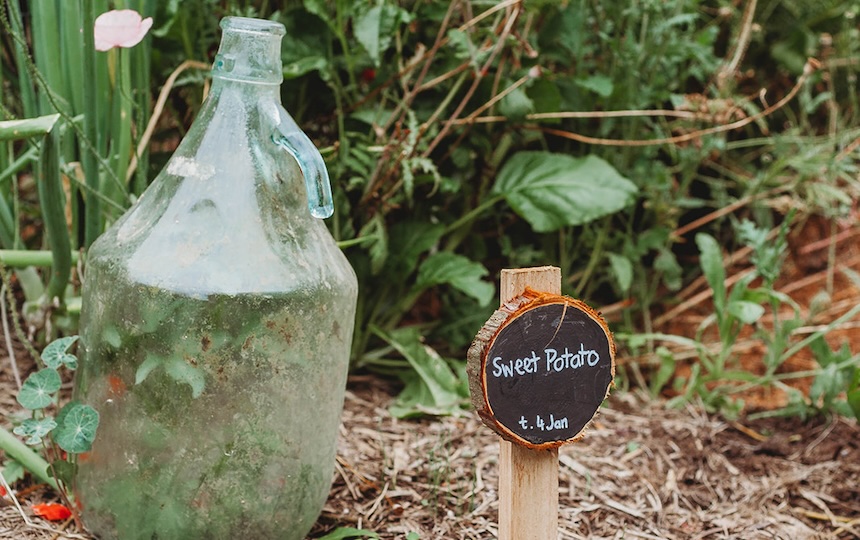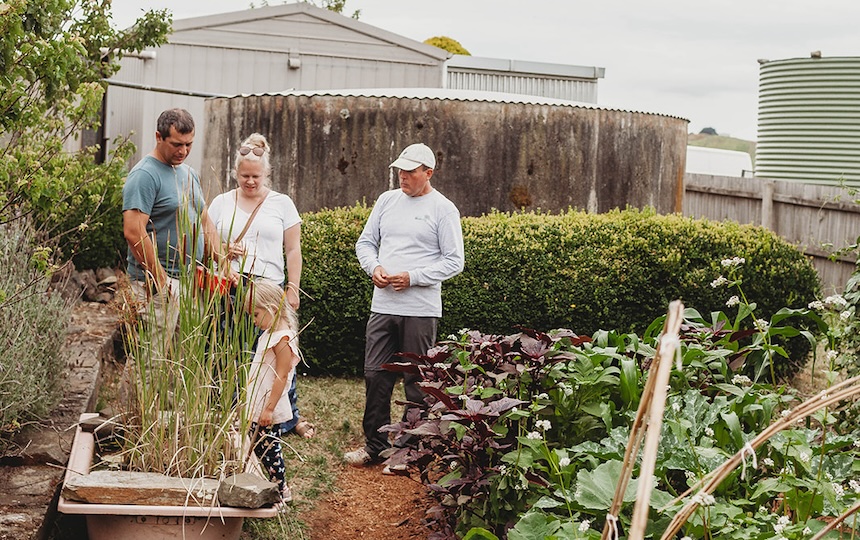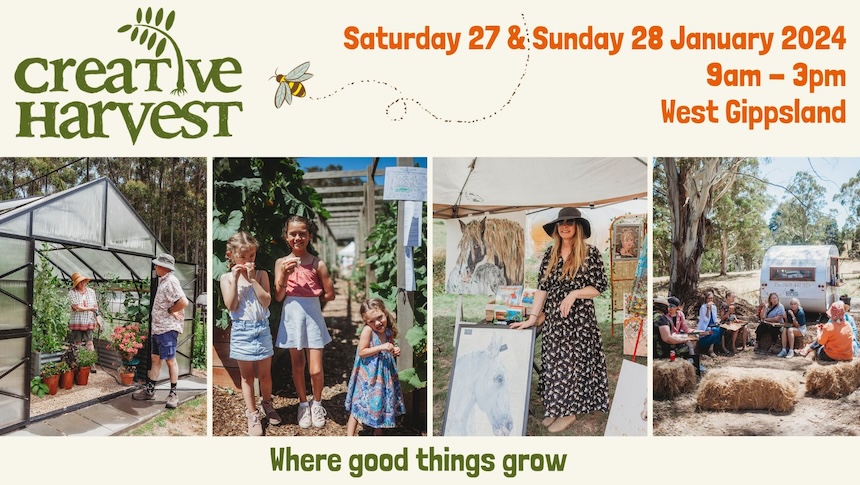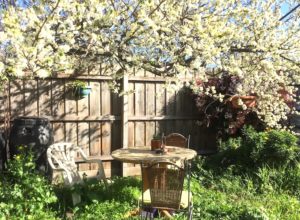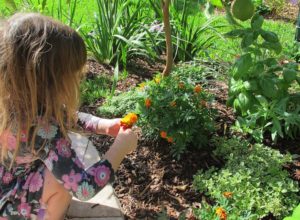The Bates Homestead is a great example of how renters can set up a successful edible garden in a rental property.
The desire to grow fresh, homegrown produce can clash with the limitations of leasing your home. Renting often translates to uncertainty, restrictions on alterations, and a perceived lack of permanence.
Meet the Bates family, who have navigated these challenges to create The Bates Homestead one rental property at a time.
In 2015, Katy Bates dreamed of creating a homestead that would provide a sustainable lifestyle for her family through growing their own food. An experience she had throughout her own childhood. The big problem was that they were renting a small home in suburban Canberra. Katy talked to her landlord about digging up patches of lawn to create a vegie garden, an agreement was struck, and The Bates Homestead was born.
Now residing in their third home, a rental in the Strzelecki Ranges of Childers, Gippsland, The Bates Homestead has consistently sought landlords’ permission to transform lawn patches into flourishing vegetable gardens.
From humble backyard lawn beginnings in Canberra, The Bates now cultivate an area of around 1500m2, producing 450-600kg of food a year, including eggs, meat and vegetables, to feed their family, friends and, when in abundance, their wider community.
Operating within the constraints of renting, Katy, her husband Greg and their two children, have cultivated a sustainable oasis. The focus on obtaining a yield guided them in creatively repurposing items and reusing materials. Their garden boasts an array of components, from wicking beds to a chicken yard, beehives, and a guinea pig tractor.
Of particular pride is their greenhouse made of reclaimed windows. Their Childers location means colder temperatures and high winds, making a greenhouse vital to growing summer crops like tomatoes and cucumbers, and protecting winter brassicas and peas from the harsh storms.
Collecting old windows and glass doors from hard rubbish piles in Melbourne suburbs, they constructed the greenhouse using the best ones. The roof is a polycarbonate sheeting they bought new. There was much family debate regarding installing the water tank inside the greenhouse, but although the tank takes up growing space, its ability to stabilise the internal winter temperatures with its 900L thermal mass means strong growth and yields. Key to this structure was the ability to deconstruct when moving, an essential consideration in design when you don’t own the property.
Despite renting, The Bates’ Homestead garden is a canvas of experimentation, as they continuously innovate and adapt to diverse growing methods. Like many, they dream of one day owning their own property, which will provide more freedom around how they produce food, integrate animal systems and native wild spaces. But for now, they are content with the soil beneath their feet and the lessons it offers.
You can visit The Bate’s Homestead as part of the open edible food garden garden weekend in West Gippsland, Creative Harvest, on Saturday 27 and Sunday 28 January, 2024. See the website ticket details and when Katy will host free talks on ‘Gardening by the Moon’.
Katy has also been kind enough to share five tips for negotiating a vegetable garden space with your landlord.
1. Explain the purpose
Clearly communicate why you want to create a vegetable garden. You can highlight the benefits, such as producing fresh, organic produce, reducing grocery expenses, and enhancing the property’s aesthetics.
2. Discuss maintenance
Assure your landlord that you are committed to maintaining the garden properly. Discuss how you will take responsibility for regular weeding, watering and overall upkeep. You might even offer to restore the lawn to its original condition if you decide to move out.
3. Landlord approval and permission
Before starting any work, seek formal approval from your landlord. Get written permission to ensure that everything is transparent in the future. This may involve drafting a simple agreement that outlines the terms and conditions, such as who is responsible for expenses and what happens to the garden when you move out.
4. Incorporate design considerations
Address any potential concerns your landlord may have regarding the design of the garden. For example, you could propose raised beds or container gardening as an alternative to digging directly into the ground. This minimises the impact on the existing landscape and is often seen as more temporary.
5. Environmental benefits
Highlight the positive environmental impact of a vegetable garden. Explain how growing your own food reduces the need for transportation and packaging, contributing to a smaller carbon footprint.
Remember, the key is to approach the conversation respectfully, showing that you’ve considered the implications and are willing to work together to create a win-win situation for both parties.

